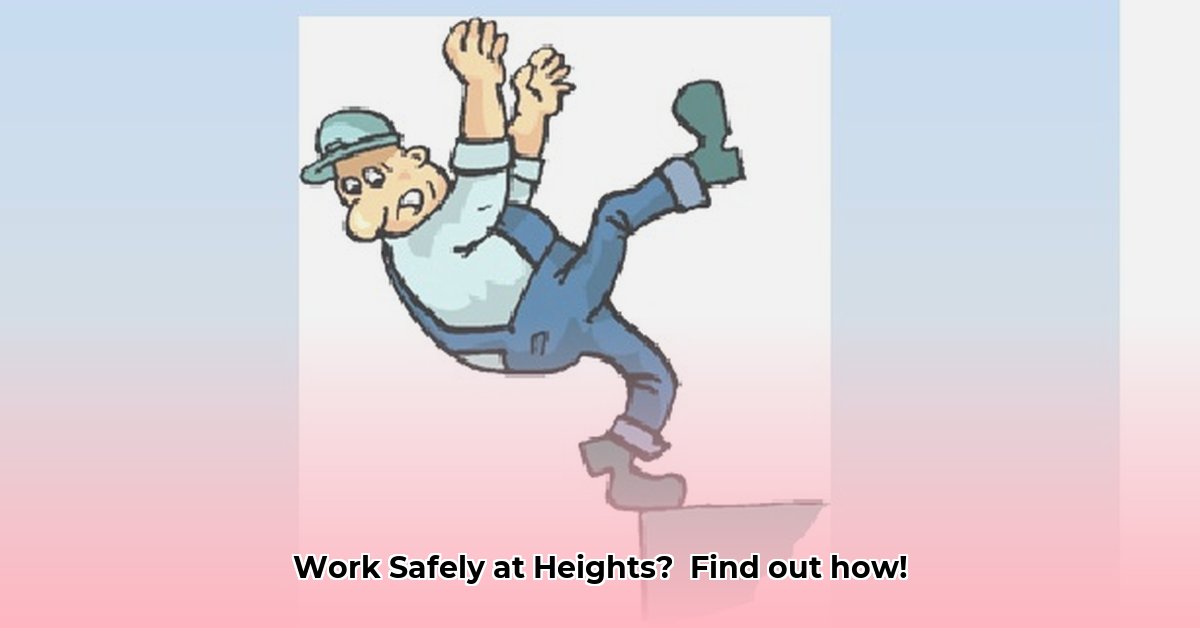
Working at heights is inherently risky, but with the right knowledge and precautions, incidents can be significantly reduced. This guide provides practical steps to ensure Veilig Werken Op Hoogte (safe working at heights) in South Africa, aligning with best practices and legal requirements.
Understanding the Regulations: Ensuring Compliance
South African legislation mandates robust safety protocols for all work at heights, regardless of the height. Non-compliance carries significant penalties, including fines and potential legal action. Understanding and adhering to these regulations is crucial for both employers and employees. The specific regulations will vary depending on the nature of the work and the environment, therefore detailed research and preparation is advised.
Risk Assessment: Identifying and Mitigating Hazards
A thorough risk assessment is the cornerstone of safe working at heights. This isn't just a formality; it's a proactive strategy to identify and mitigate potential hazards before they cause harm.
Steps to a Comprehensive Risk Assessment:
Identify Hazards: List all potential dangers (e.g., falling objects, unstable surfaces, equipment failure, weather conditions). Consider all aspects of the working environment.
Assess Likelihood and Severity: For each hazard, evaluate the likelihood of it occurring (low, medium, high) and the potential severity of consequences (minor, moderate, severe, fatal).
Determine Risk Level: Combine likelihood and severity to establish the overall risk level for each hazard. Prioritise hazards with high risk levels.
Implement Control Measures: Develop and implement control measures to mitigate identified risks. These may include engineering controls (e.g., using sturdy scaffolding), administrative controls (e.g., implementing safe work procedures), and personal protective equipment (PPE).
Document Everything: All aspects of the risk assessment must be meticulously recorded and kept readily accessible for review and auditing.
Safety Equipment: Your First Line of Defence
Appropriate Personal Protective Equipment (PPE) is essential for working at heights. Choosing and using the correct equipment is non-negotiable. This includes:
Harnesses: Properly fitted and regularly inspected harnesses are fundamental. Ensure they are appropriate for the specific task.
Lifelines and Anchor Points: Robust anchor points and appropriately rated lifelines are critical components of a fall protection system.
Fall Arrest Systems: Choose fall arrest systems that meet the relevant South African standards. Regular inspection and maintenance are paramount.
Other PPE: Consider additional PPE such as helmets, gloves, and safety footwear, depending on the specific task and environment.
Remember: PPE is only effective if used correctly and maintained regularly.
Training and Competence: Investing in Safety
Proper training is a non-negotiable aspect of height safety. Workers must receive comprehensive training on the safe use of equipment, identification of hazards, emergency procedures, and the relevant regulations. Regular refresher training should be provided to ensure that knowledge and skills remain current. Certification, where appropriate, needs to be obtained and kept current. Consider investing in courses that cover specific industry practices and standards.
Compliance and Inspections: A Continuous Process
Maintaining ongoing compliance with South African health and safety regulations is crucial. Regular inspections of equipment and work sites will assist in identifying potential issues before they escalate into incidents. These inspections must have documented evidence of outcomes. Proactive maintenance and corrective actions are key to a consistently safe working environment. It's crucial to stay updated on any changes to legislation and best practices.
Checklists: A Daily Safety Reminder
These simple checklists serve as daily reminders for crucial safety checks.
Employer Checklist:
- [ ] Risk assessment reviewed and updated.
- [ ] All equipment inspected and maintained.
- [ ] All worker training records up-to-date.
- [ ] Compliance with relevant South African regulations.
Worker Checklist:
- [ ] Personal protective equipment (PPE) correctly worn and inspected.
- [ ] Safe work procedures followed diligently.
- [ ] Any unsafe conditions reported immediately.
- [ ] Training up to date and understood.
Key Takeaways: Prioritising Safety
- Risk assessment is paramount: A thorough assessment before any height work is non-negotiable.
- Appropriate safety equipment is crucial: Invest in high-quality PPE and ensure it is used correctly.
- Training is essential: Workers need thorough and up-to-date training on safe working practices.
- Compliance is ongoing: Regular inspections and adherence to regulations are vital.
By following these guidelines and fostering a strong safety culture, we can achieve Veilig Werken Op Hoogte – safe working at heights – for everyone. Remember, safety is not optional; it is a fundamental responsibility.